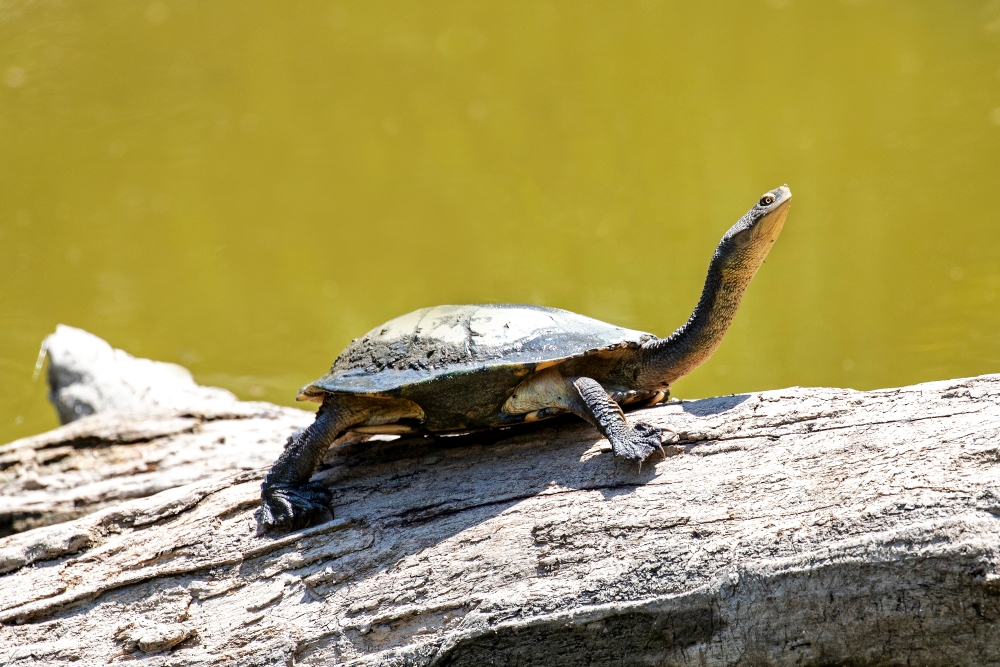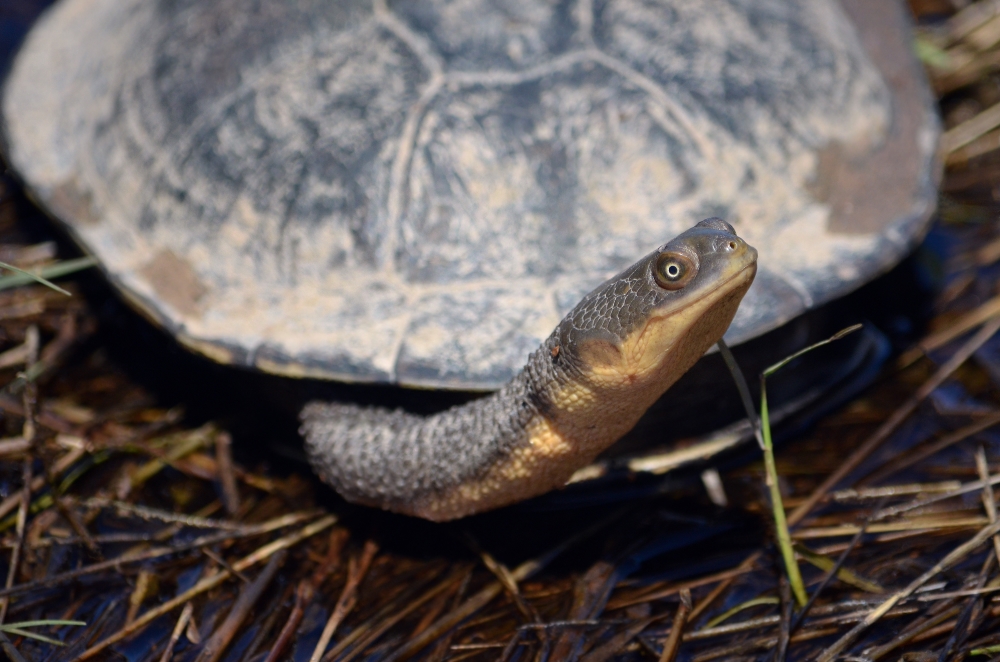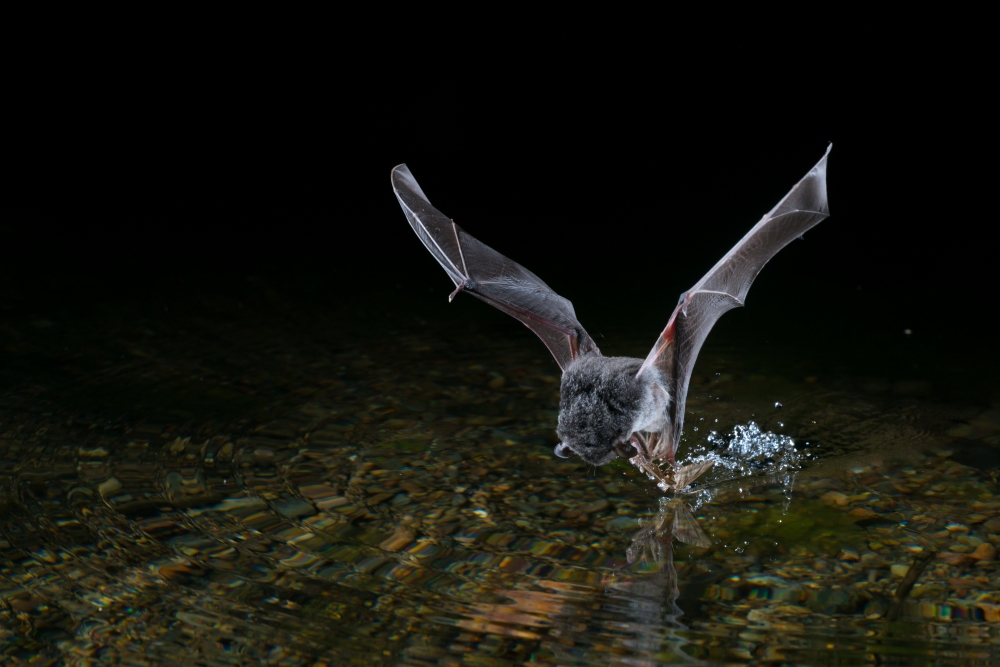Sturt Park
Sturt Park includes walking paths, a skate park, playground and sporting fields (basketball and tennis courts).
Here you can see a range of different forest types including Sydney Turpentine Ironbark Forest fringing the creek line. This vegetation type is now rare due to land clearing and is specially protected under the NSW Biodiversity Conservation Act 2016.
Sydney Turpentine Ironbark Forest is a tall open forest found on shale and shale-enriched sandstone soils on the coast and hinterland of Sydney. It has been extensively cleared but was once widely distributed between Sutherland and the Hornsby Plateau. Typically it is recognised by a canopy dominated by turpentine (Syncarpia glomulifera), red mahogany (Eucalyptus resinifera) and various ironbark’s of which Eucalyptus paniculata is most often recorded.
Animal Life in the Lower Ponds and Subiaco Creek Catchment
Eastern Long Necked Turtles
Eastern Long-necked turtles (Chelodina longicollis) frequent the deeper chain of ponds found along the r Ponds Creek waterway. Sometimes called “snake-necked turtles”, they have a long neck, which typically reaches 60% of the shell length! These native reptiles are found in a broad range of freshwater habitats, where they feed on plankton, tadpoles, small fish and aquatic insects, as well as terrestrial insects that fall upon the water.
These turtles are relatively slow to mature (7-8 years for males, and 10-12 years for females). Females lay between 6 to 23 hard-shelled eggs during spring and late summer, and can produce up to 3 clutches per year.
These turtles, like many reptiles, are ectothermic, or cold-blooded, meaning their body temperature relies on external sources of heat. For this reason they are often least active in the early morning, and may be spotted basking in sunlight to warm up.
Eastern Long- neck turtles have also been called “stinker turtles”, due to a smelly secretion they can emit from musk glands to repel predators. Eastern Long- neck turtles are a protected species across all eastern States.


Microbats
The Lower Ponds and Subiaco catchment is also the home of a number of species of microbat. Microbats are tiny flying, nocturnal mammals that make their homes in tree hollows and/or caves depending on the species. Where natural roost sites are scarce, some species may roost in artificial structures, such as in gaps of roofs and walls or under bridges. Microbat roost boxes can also make a suitable home – see if you can spot them, high in the trees during your walk. Using their ears, rather than their eyes to navigate, microbats are known to feed on insects, such as mosquitoes, caterpillars, and flying termites.
A number of species of microbat have been spotted living within the Lower Ponds Creek reserve, including the Gould’s Wattled Bat and the Chocolate Wattled Bat, as well as species listed as threatened such as the Eastern False Pipistrelle and the Large-footed Myotis. The Large footed Myotis gets its name from – yes, you guessed it - its large feet. Also known colloquially as the “fishing bat”, this microbat uses its big feet and curved claws to rake across the water in ponds and creeks, catching surface-dwelling insects and even small fish.



